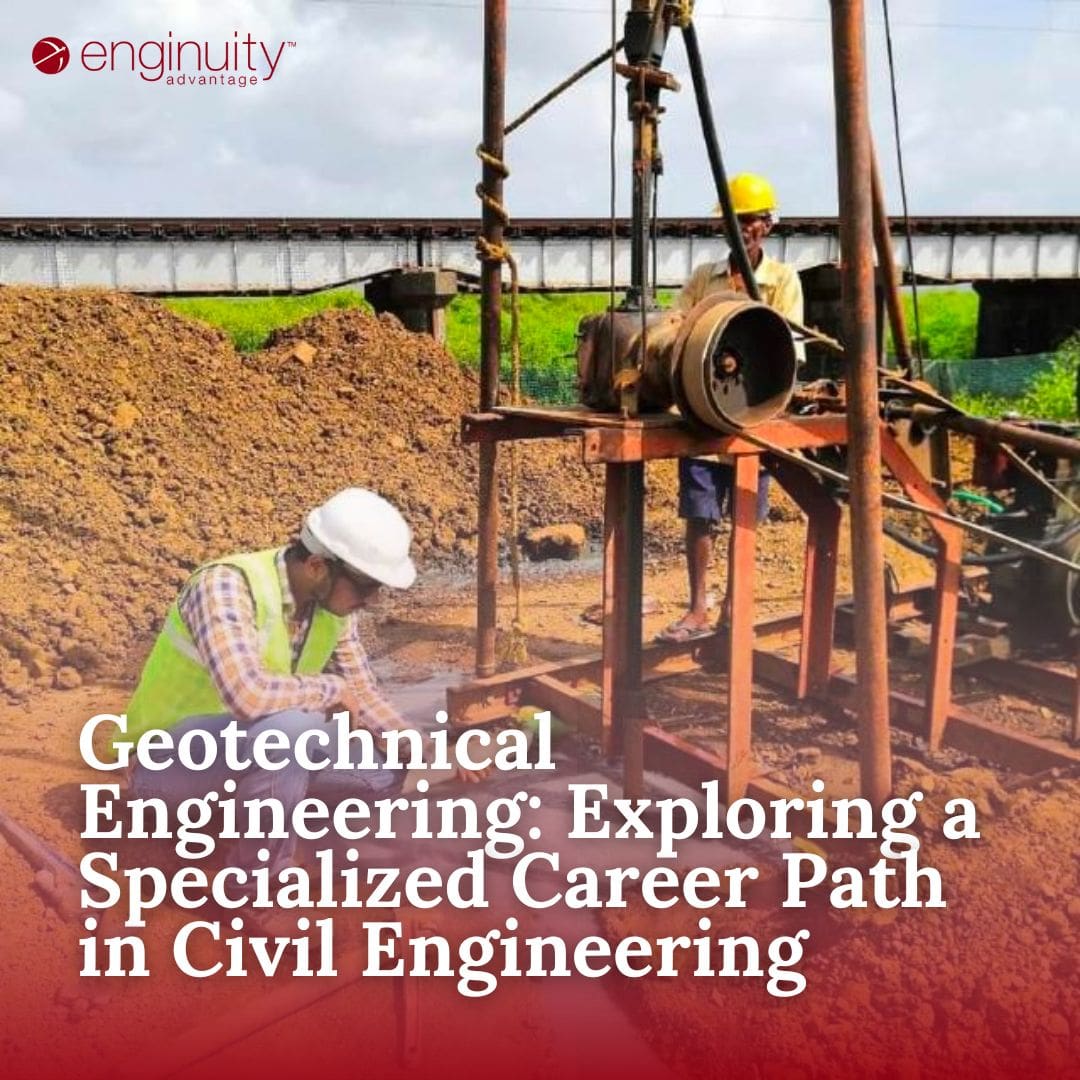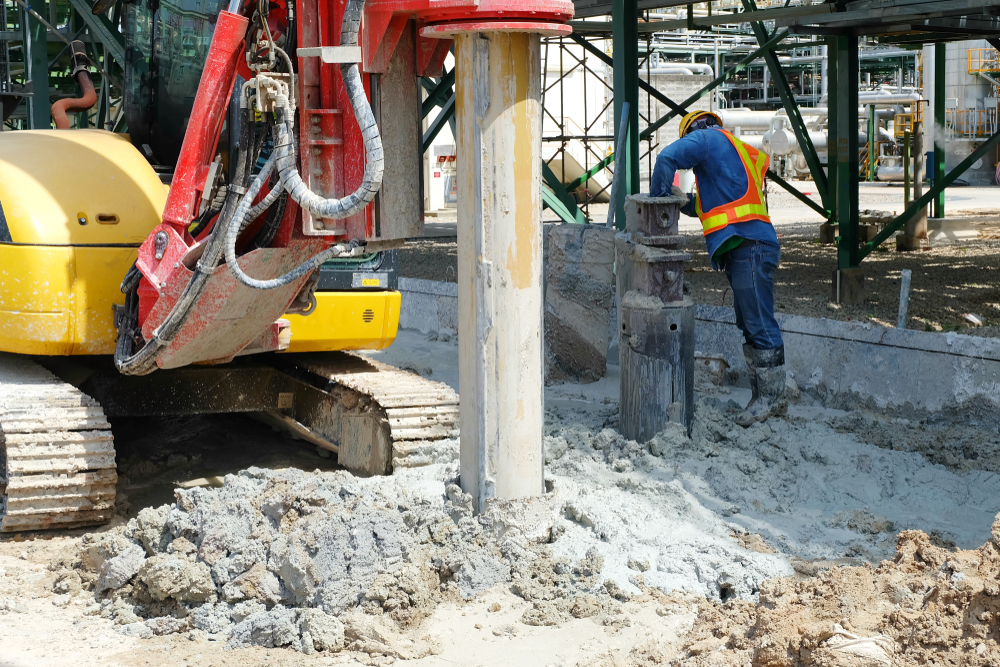Exactly How a Competent Tailings Engineer Can Maximize Your Mining Procedures
Wiki Article
Recognizing the Necessary Role of the Geotechnical Sector in Modern Building Projects and Infrastructure Growth
The geotechnical market is a cornerstone of contemporary construction and framework development, giving essential understandings into dirt actions that directly influence task end results. With advanced dirt assessments and cutting-edge engineering services, geotechnical specialists not only make sure architectural integrity however additionally address sustainability issues amidst evolving environmental requirements. As framework demands grow and brand-new obstacles arise, the significance of this area comes to be increasingly evident. What effects might these developments have for future projects and the general safety and security of our built atmosphere?Importance of Dirt Analysis
Dirt evaluation plays an important function in the geotechnical market, serving as the foundation for informed decision-making in construction tasks. Exact soil assessment is vital for identifying the suitability of a website for numerous kinds of structures, consisting of household homes, business buildings, and bridges. By evaluating dirt make-up, thickness, moisture, and strength content, designers can anticipate possible obstacles and reduce risks linked with ground instability, erosion, and negotiation.The evaluation process typically entails a series of examinations and observations that give essential info regarding the subsurface conditions. This information notifies the design and building and construction processes, making certain that structures are constructed on solid ground with adequate assistance. Additionally, recognizing the soil profile makes it possible for engineers to pick appropriate building and construction techniques and materials, enhancing resource application and minimizing expenses.
In enhancement to making certain structural honesty, dirt assessment adds to environmental sustainability. By recognizing potential contamination or damaging effects on surrounding ecological communities, engineers can implement techniques to secure these all-natural sources. Overall, complete dirt analysis is essential in the geotechnical field, underpinning the security, effectiveness, and ecological obligation of building and construction tasks.
Trick Geotechnical Strategies
A selection of vital geotechnical strategies are used to assess and enhance the stability and efficiency of building and construction websites. One fundamental approach is dirt sampling and testing, which allows engineers to determine the physical and chemical buildings of the ground. This details is essential for making educated choices relating to structure style and building techniques.One more vital method is site characterization, which involves the detailed analysis of dirt and rock problems with techniques such as borehole drilling and in-situ screening. Strategies like Criterion Infiltration Examinations (SPT) and Cone Penetration Tests (CPT) offer valuable data on dirt stamina and stratigraphy.
Ground enhancement techniques, such as dirt stablizing and grouting, are likewise crucial in improving the load-bearing capacity of weak dirts. These approaches can minimize settlement and enhance overall website conditions.
Additionally, slope stability evaluation is essential for determining potential landslide risks and guaranteeing the safety and security of excavations. This evaluation typically employs mathematical modeling and limitation equilibrium approaches to anticipate soil habits under various problems.
Integrating these geotechnical strategies right into construction preparation not only maximizes project end results but additionally guarantees the lasting sustainability of infrastructure growth.
Effect On Building Safety

In addition, effective geotechnical design involves carrying out mitigation approaches for determined risks. This might consist of soil stabilization strategies, keeping frameworks, or drainage systems to ease hydrostatic stress. By resolving these elements, building groups can reduce the possibility of mishaps and boost employee safety and security.
In addition, continuous tracking of website problems is critical during building. Geotechnical instruments can give real-time information pertaining to ground movement and stability, enabling for timely interventions when needed.
In significance, the geotechnical sector plays a pivotal role in protecting building jobs. By focusing on ground stability and utilizing strenuous analysis approaches, the geotechnical market not just secures the labor force however additionally adds to the durability and dependability of built facilities.
Sustainability in Geotechnical Practices

Additionally, geotechnical designers are now utilizing sophisticated technologies, such as geosynthetics, which enhance soil security while reducing the quantity of product called for. This not just saves resources but also leads to much less waste generation (geotechnical engineers). The assimilation of lasting style principles into geotechnical design urges the usage of renewable resource resources in building processes, further reducing carbon exhausts
By carrying out these assessments, geotechnical specialists can develop approaches that alleviate adverse results, guaranteeing conformity with environmental laws. Generally, the emphasis on sustainability within geotechnical techniques not only contributes to the long life and durability of infrastructure however additionally promotes a liable approach to land and source management.
Future Trends in Geotechnical Design
Development is driving the future of geotechnical design, as emerging modern technologies and methodologies reshape the market. The assimilation of advanced data analytics and expert system is set to transform website examination and risk evaluation, making it possible for engineers to make even more enlightened decisions based upon real-time information. The usage of geosynthetic materials is gaining traction, using lasting services that boost soil stability and reduce environmental effect - engineer of record.One more significant fad is the fostering of automated and robotic systems for tracking and construction procedures. These innovations not only improve accuracy but additionally enhance safety by reducing human involvement in dangerous atmospheres. Additionally, the application of Building Info Modeling (BIM) in geotechnical layout promotes improved partnership among stakeholders, maximizing job delivery and minimizing expenses.
As climate change positions new difficulties, the sector is increasingly concentrating on strength and adaptability in style practices, ensuring framework can stand up to extreme weather events. The continuous fad toward sustainability will drive advancement in eco-friendly materials and techniques, straightening geotechnical engineering with broader environmental objectives. Jointly, these trends will shape a much more reliable, lasting, and resilient geotechnical landscape for future jobs.
Final Thought

The geotechnical sector is a keystone of contemporary building and infrastructure growth, giving important insights into dirt habits that directly affect task results. geotechnical engineers.Dirt evaluation plays a vital role in the geotechnical industry, offering as the foundation for educated decision-making in building projects. On the whole, detailed dirt assessment is indispensable in the geotechnical area, underpinning the safety, performance, and ecological responsibility of building and construction jobs
Construction safety and security is substantially influenced by geotechnical techniques, as the stability and honesty of the ground directly influence the general safety and security of a building site.In final thought, the geotechnical industry is indispensable in contemporary construction and facilities development, giving vital analyses tailings engineer that guarantee architectural integrity and safety and security.
Report this wiki page